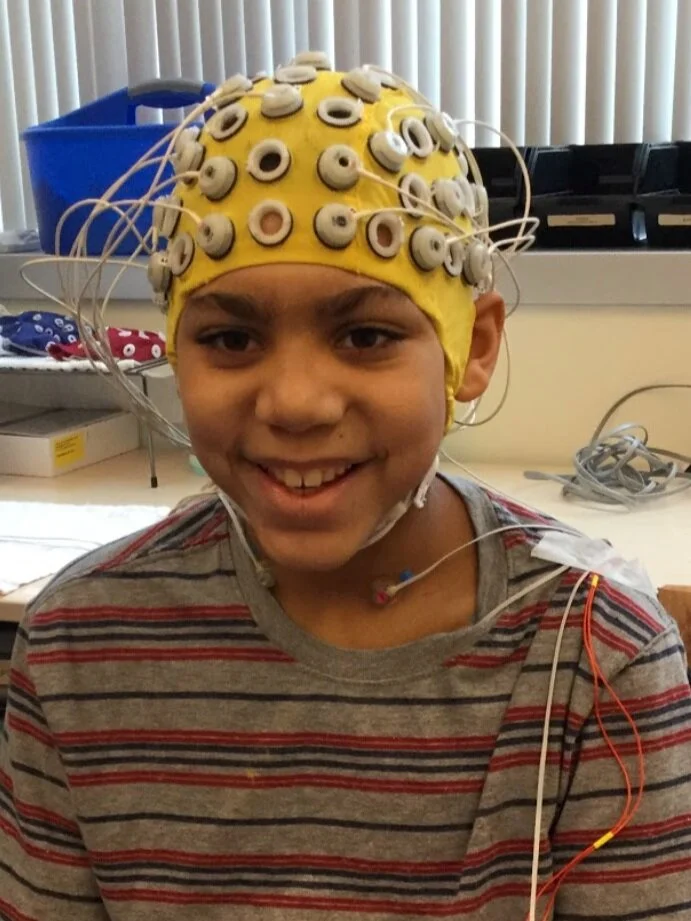Types of Studies
Behavioral Studies
During behavioral testing, scientists learn about a person's behavior — the things they do every day — without taking a picture of the brain. In these studies you may be asked to answer questions, solve puzzles, or play computer games. One example of this kind of question is below. Some studies involve only behavioral tasks. Most brain imaging studies also include some form of behavioral testing.
For example:
“I often notice small sounds when others do not.”
Definitely agree Slightly agree Slightly disagree Definitely disagree
Brain Imaging Studies
About EEG Studies
Electroencephalography (EEG) is a non-invasive method for studying the brain. Researchers use sensors that can record electrical activity happening in your brain. After recording this activity, they use it to understand the timing of changes in brain activity.
During an EEG experiment, you will wear a stretchy cap with holes in it. Researchers will insert a clear gel and painless sensors into the holes in this cap to record your brain's electrical activity while you look at pictures or listen to sounds.
About fMRI Studies
Magnetic resonance imaging (MRI) is a safe and non-invasive tool used to measure the brain. We can use MRI with infants, children, and adults. Researchers use this tool to view the brain’s structure and functions. From MRI, we get detailed pictures of the size and shape of a brain (called a structural MRI) and we can also map the different parts of the brain used in different everyday tasks (called a functional MRI). The MRI machine is, in essence, a big magnet. As you lie in its magnetic field, invisible radio waves are released around you. This will result in harmless radio waves bouncing off the different substances that make up your brain. These radio waves are then detected by a computer, which transforms the data into images of the brain’s structure and activity. The static magnetic fields used in MRI have no known long-term adverse effects. Unlike X-rays or CT scans, MRI does not use ionizing radiation. The MR imaging we conduct for research purposes does not involve any injections.



